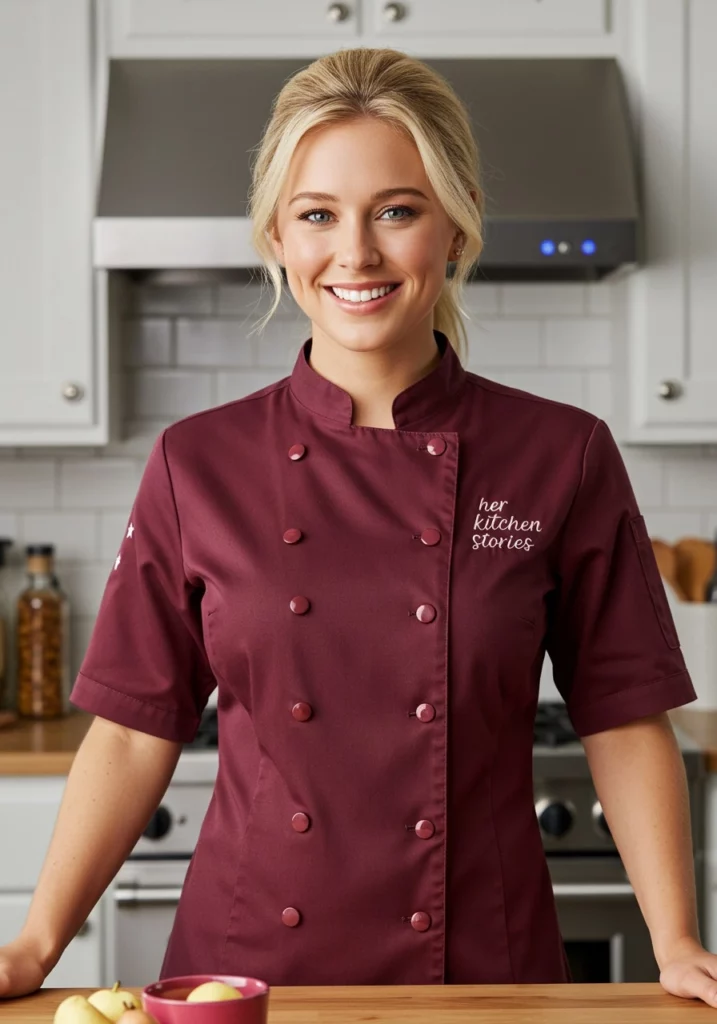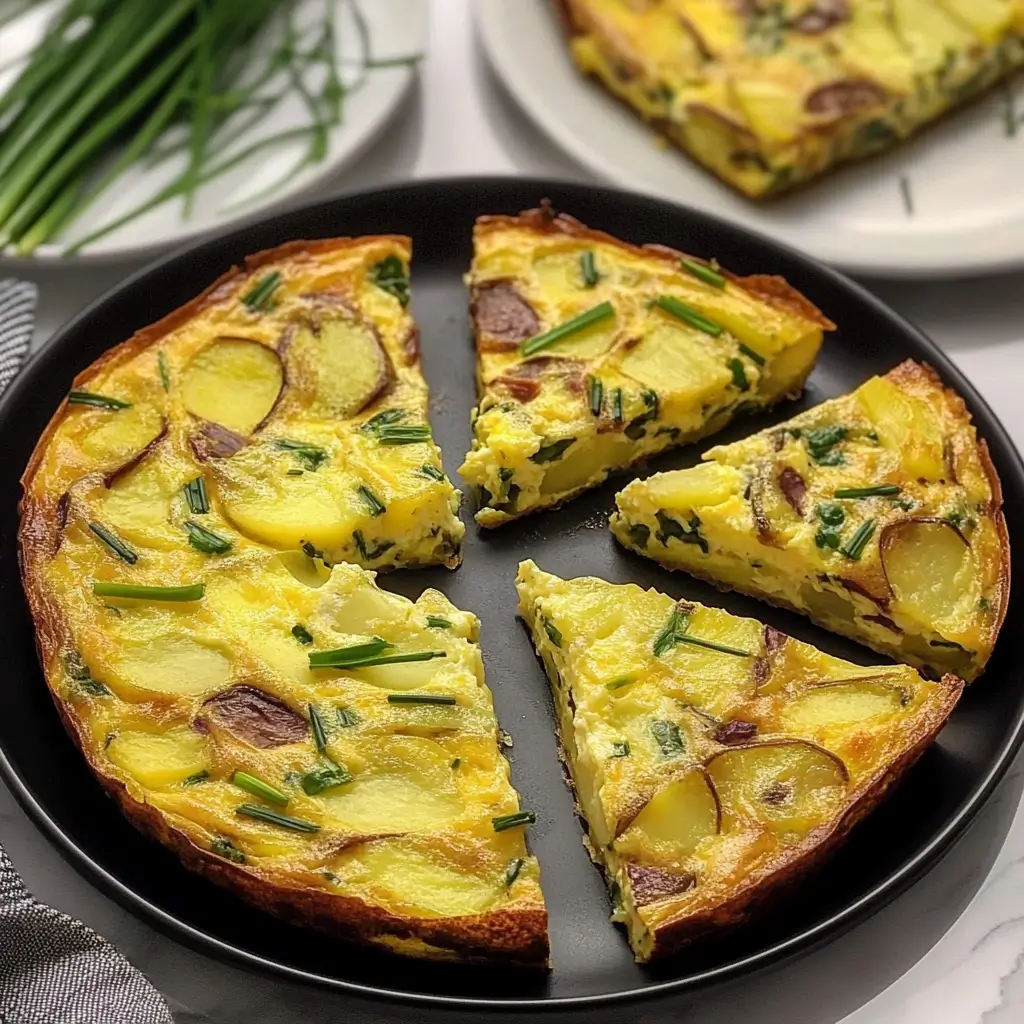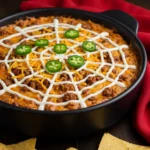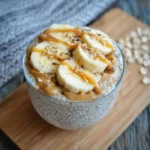There’s something incredibly satisfying about a perfectly cooked frittata, and this New Potato and Chive Frittata recipe has become an absolute staple in our household. The first time I made it, the aroma of sautéing onions, tender new potatoes, and fresh chives filled the kitchen, drawing everyone in. The result was a beautifully golden, fluffy frittata, studded with creamy potatoes and bursting with the subtle, oniony bite of chives. My family devoured it, with requests for seconds all around! It’s become our go-to for lazy weekend brunches, quick weeknight dinners, and even a delightful packed lunch. The simplicity of the ingredients belies the sophisticated flavors, making it a dish that’s both comforting and impressive. It’s wonderfully versatile, and I’ve found it’s a fantastic way to use up those lovely new potatoes when they’re in season. This isn’t just a recipe; it’s a gateway to effortless, delicious meals that bring everyone to the table with a smile.
**Unlock a World of Flavor: The Ultimate New Potato and Chive Frittata Recipe**
A frittata is essentially an Italian open-faced omelet, but it’s so much more than that. It’s a canvas for your culinary creativity, a hearty and satisfying dish that can be adapted to whatever ingredients you have on hand. This New Potato and Chive Frittata, however, holds a special place. The tender, earthy new potatoes provide a wonderful textural contrast to the fluffy eggs, while fresh chives impart a delicate, bright, and slightly pungent flavor that elevates the entire dish. Whether you’re a seasoned cook or a beginner in the kitchen, this recipe is designed to be straightforward, delivering impressive results every time. It’s perfect for breakfast, brunch, lunch, or a light supper, proving its incredible versatility. Get ready to discover why this will become your new favorite way to enjoy eggs and potatoes!
**Ingredients for Your Perfect New Potato and Chive Frittata**
Gathering the right ingredients is the first step towards frittata perfection. For this specific recipe, the quality and freshness of your new potatoes and chives will make a significant difference.
- New Potatoes: 1 lb (approx. 450g), small waxy varieties like Yukon Gold, red potatoes, or fingerlings, scrubbed and cut into ½-inch (1.25 cm) dice or thin slices
- Large Eggs: 8
- Heavy Cream or Whole Milk: ¼ cup (60ml) (Heavy cream yields a richer frittata, milk a lighter one)
- Fresh Chives: ¼ cup, freshly chopped (plus extra for garnish)
- Yellow Onion: 1 small (or ½ medium), finely chopped
- Garlic: 2 cloves, minced
- Sharp Cheddar Cheese (or Gruyère, Parmesan, or a mix): ½ cup (approx. 50-60g), grated
- Olive Oil or Butter: 2 tablespoons (or a mix of both)
- Salt: ¾ teaspoon (or to taste)
- Freshly Ground Black Pepper: ½ teaspoon (or to taste)
- Optional: A pinch of Nutmeg: For a subtle warmth
Why these ingredients work:
- New Potatoes: Their waxy texture means they hold their shape well when cooked, providing lovely tender bites throughout the frittata rather than disintegrating.
- Eggs: The backbone of the frittata, providing structure and protein.
- Heavy Cream/Milk: Adds moisture and richness, contributing to a creamier, more tender texture.
- Chives: Offer a mild, fresh oniony flavor that complements potatoes and eggs beautifully.
- Onion & Garlic: These aromatics build a savory base flavor for the frittata.
- Cheese: Provides saltiness, umami, and a delightful gooeyness when melted. Sharp cheddar is classic, but Gruyère adds nuttiness, and Parmesan offers a salty kick.
**Step-by-Step Instructions: Crafting Your Culinary Masterpiece**
Follow these instructions carefully for a frittata that is cooked through, beautifully golden, and packed with flavor. An oven-safe skillet (cast iron is ideal, but any oven-proof non-stick skillet will work) around 10 inches in diameter is crucial for this recipe.
- Prepare the Potatoes:
- Scrub the new potatoes thoroughly. There’s no need to peel them, as the skin is thin and adds a nice rustic touch and extra nutrients.
- Dice or thinly slice the potatoes into uniform ½-inch pieces. Uniformity ensures even cooking.
- Par-cook the Potatoes: You have two options:
- Boiling: Place diced potatoes in a small saucepan, cover with cold water, add a pinch of salt, and bring to a boil. Reduce heat and simmer for 5-7 minutes, or until just tender when pierced with a fork. Drain well.
- Microwaving: Place diced potatoes in a microwave-safe bowl with 2 tablespoons of water. Cover and microwave on high for 3-5 minutes, or until tender-crisp. Drain any excess water.
- Par-cooking ensures the potatoes are fully cooked within the frittata without overcooking the eggs.
- Preheat Oven and Prepare Skillet:
- Position an oven rack in the center of the oven and preheat to 375°F (190°C).
- Choose a 10-inch oven-safe skillet (cast iron is excellent). If you don’t have one, you can start on the stovetop and transfer the mixture to a greased pie dish or baking dish for the oven portion.
- Sauté Aromatics and Potatoes:
- Heat the olive oil and/or butter in your oven-safe skillet over medium heat.
- Add the chopped onion and cook, stirring occasionally, for about 5-7 minutes, until softened and translucent.
- Add the minced garlic and cook for another minute until fragrant, being careful not to burn it.
- Add the par-cooked, drained new potatoes to the skillet. Sauté for 5-7 minutes, stirring occasionally, allowing them to get a little golden brown and slightly crispy in spots. This step adds an extra layer of flavor. Season lightly with a pinch of salt and pepper.
- Prepare the Egg Mixture:
- While the potatoes are sautéing, crack the 8 large eggs into a medium-sized mixing bowl.
- Add the heavy cream (or milk), ¾ teaspoon of salt, ½ teaspoon of freshly ground black pepper, and the optional pinch of nutmeg.
- Whisk everything together until the yolks and whites are just combined and the mixture is slightly frothy. Be careful not to over-whisk, as this can make the frittata tough. You want it to be smooth but not overly airy.
- Stir in most of the chopped fresh chives and most of the grated cheese, reserving a little of each for topping.
- Combine and Cook on Stovetop:
- Pour the egg mixture evenly over the potatoes and onions in the skillet.
- Use a spatula to gently distribute the potatoes and onions if needed, ensuring they are evenly spread.
- Sprinkle the reserved cheese and chives over the top.
- Cook on the stovetop over medium-low heat for about 5-7 minutes. You’re looking for the edges of the frittata to start setting. The center will still be quite liquid. Avoid stirring the mixture once the eggs are added.
- Bake in the Oven:
- Carefully transfer the skillet to the preheated oven (remember the handle will be hot!).
- Bake for 15-20 minutes, or until the frittata is puffed, golden brown on top, and the center is just set (a knife inserted near the center should come out clean, or with slightly moist crumbs but no liquid egg). The internal temperature should reach 160-165°F (71-74°C).
- Keep an eye on it during the last few minutes to prevent overcooking, which can result in a rubbery texture.
- Rest and Serve:
- Carefully remove the skillet from the oven using oven mitts. The frittata will be very hot.
- Let the frittata rest in the skillet for at least 5-10 minutes before slicing and serving. This allows the eggs to finish setting and makes it easier to slice neatly. It will also deflate slightly, which is normal.
- Garnish with additional fresh chives if desired.
- To serve, you can either slice it into wedges directly from the skillet or carefully slide it onto a cutting board or serving platter.
**Nutrition Facts: A Healthy Glance**
Understanding the nutritional profile of your meals is key to a balanced diet. This New Potato and Chive Frittata offers a good source of protein and essential nutrients.
- Servings: This recipe makes 6-8 servings, depending on appetite and whether it’s a main course or a side.
- Calories per serving (approximate, based on 6 servings): 280-350 calories.
Disclaimer: The exact nutritional values can vary based on specific ingredients used (e.g., type of cheese, use of cream vs. milk, amount of oil/butter) and portion sizes.
A breakdown of why it’s a relatively healthy choice:
- Protein-Packed: Eggs are a fantastic source of complete protein.
- Vitamins and Minerals: New potatoes contribute Vitamin C, potassium, and B vitamins. Eggs offer Vitamin D, B12, and choline.
- Healthy Fats: If using olive oil, you get monounsaturated fats.
- Fiber: Potatoes, especially with skin on, and onions provide dietary fiber.
**Time is Precious: Preparation and Cooking Time**
Knowing how long a recipe takes from start to finish helps with meal planning. This frittata is relatively quick to come together.
- Preparation Time: 15-20 minutes (This includes chopping vegetables, grating cheese, and whisking eggs. Par-cooking potatoes is factored in here).
- Cooking Time: 25-30 minutes (Approximately 5-7 minutes on the stovetop, followed by 15-20 minutes in the oven, plus 5-10 minutes resting time).
- Total Time: Approximately 45-60 minutes
This makes it an excellent option for a satisfying meal that doesn’t require hours in the kitchen.
**Serving Suggestions: Elevate Your New Potato and Chive Frittata**
This New Potato and Chive Frittata is delicious on its own, but pairing it with the right accompaniments can turn it into a truly memorable meal. Here are some ideas:
- For Breakfast or Brunch:
- Fresh Fruit Salad: A colorful mix of berries, melon, and citrus offers a refreshing contrast.
- Toast or Crusty Bread: Perfect for soaking up any delicious bits left on the plate. Sourdough or whole grain are excellent choices.
- Breakfast Meats: Crispy bacon, savory sausage links, or Canadian bacon.
- Yogurt Parfait: Layers of Greek yogurt, granola, and fruit.
- A Simple Green Salad: Mixed greens with a light vinaigrette.
- Smoked Salmon: Adds a luxurious touch.
- Coffee, Tea, or Freshly Squeezed Juice: Classic breakfast beverages.
- Mimosas or Bellinis: For a festive brunch.
- For Lunch or a Light Dinner:
- A Robust Salad: Consider an arugula salad with lemon vinaigrette, a Caprese salad, or a quinoa salad.
- Roasted Vegetables: Asparagus, cherry tomatoes, or bell peppers roasted alongside the frittata.
- Soup: A light tomato soup or a creamy vegetable soup.
- Garlic Bread: Toasted with garlic butter and herbs.
- A Dollop of Something Creamy: Sour cream, crème fraîche, or a simple aioli can add another layer of flavor.
- Pickled Onions or Relish: Adds a tangy counterpoint.
- A glass of crisp white wine: Sauvignon Blanc or Pinot Grigio pairs nicely.
Presentation Matters:
- Serve wedges directly from the skillet for a rustic look.
- Alternatively, slide the whole frittata onto a large platter and garnish generously with fresh chives.
- Cut into small squares for appetizers or party food.
**Pro Tips for Frittata Perfection**
Achieve frittata mastery with these five essential tips:
- Don’t Overcook the Eggs: This is the cardinal rule for frittatas (and most egg dishes). Overcooking leads to a rubbery, dry texture. Bake until the frittata is just set – a slight wobble in the very center is okay, as it will continue to cook from residual heat while resting.
- Use an Oven-Safe Skillet: A well-seasoned cast-iron skillet is ideal because it heats evenly and retains heat well, transitioning perfectly from stovetop to oven. If you don’t have one, cook the filling in a regular skillet and transfer it to a greased pie dish or baking pan before adding the egg mixture and baking.
- Pre-cook Your Fillings (Especially Potatoes): Vegetables like potatoes, onions, and heartier greens should be cooked until tender before the eggs are added. This ensures they are perfectly cooked through in the final dish and releases their moisture, preventing a watery frittata. Sautéing also builds deeper flavors.
- Room Temperature Ingredients: While not strictly essential for frittatas as for some baking, allowing eggs and dairy (milk/cream) to come closer to room temperature can help them incorporate more smoothly and cook more evenly.
- Rest Before Slicing: Letting the frittata rest for 5-10 minutes after it comes out of the oven is crucial. It allows the internal temperature to distribute, the eggs to fully set, and makes it much easier to slice cleanly. It will also be at a more pleasant eating temperature.
**Frequently Asked Questions (FAQ) – Your Frittata Queries Answered**
Here are answers to some common questions about making this New Potato and Chive Frittata:
- Q: Can I make this frittata ahead of time?
- A: Yes, absolutely! Frittatas are excellent for meal prep. You can bake it, let it cool completely, then cover and refrigerate it for up to 3-4 days. It’s delicious served cold, at room temperature, or gently reheated.
- Q: How do I store leftover frittata?
- A: Allow the frittata to cool completely to room temperature. Then, either wrap the entire skillet (if it fits) with plastic wrap or transfer slices to an airtight container. Store in the refrigerator for up to 3-4 days. You can also freeze frittata. Wrap individual slices tightly in plastic wrap, then in foil or a freezer-safe bag, for up to 2-3 months. Thaw overnight in the refrigerator before reheating.
- Q: What’s the best way to reheat frittata?
- A: To retain the best texture, reheat frittata slices in a preheated oven at 300-325°F (150-160°C) for about 10-15 minutes, or until warmed through. You can also microwave it in short bursts (30-60 seconds), but be careful not to overdo it, as this can make it rubbery. Reheating in a skillet over low heat with a lid also works well.
- Q: Can I use different types of potatoes or other vegetables?
- A: Definitely! While new potatoes are excellent for their waxy texture, you can use leftover roasted or boiled potatoes. Feel free to add other cooked vegetables like spinach (squeezed dry), bell peppers, mushrooms, zucchini (squeeze out excess moisture), or asparagus. Just ensure they are pre-cooked and any excess moisture is removed.
- Q: Why is my frittata watery or rubbery?
- A: A watery frittata is usually due to excess moisture from the vegetables (not pre-cooking or draining them enough) or too much liquid (milk/cream) in the egg mixture. A rubbery frittata is almost always a result of overcooking the eggs. Bake only until just set and remember it will continue to cook as it rests. Also, over-whisking the eggs can incorporate too much air, which then collapses, potentially leading to a denser, tougher texture. Whisk just until combined.
This New Potato and Chive Frittata recipe is more than just a meal; it’s an experience. It’s the aroma that fills your home, the satisfaction of a dish made with simple, wholesome ingredients, and the joy of sharing good food. Enjoy crafting this culinary delight!
Print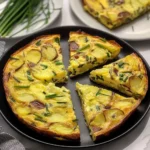
New Potato and Chive Frittata Recipe
Ingredients
- New Potatoes: 1 lb (approx. 450g), small waxy varieties like Yukon Gold, red potatoes, or fingerlings, scrubbed and cut into ½-inch (1.25 cm) dice or thin slices
- Large Eggs: 8
- Heavy Cream or Whole Milk: ¼ cup (60ml) (Heavy cream yields a richer frittata, milk a lighter one)
- Fresh Chives: ¼ cup, freshly chopped (plus extra for garnish)
- Yellow Onion: 1 small (or ½ medium), finely chopped
- Garlic: 2 cloves, minced
- Sharp Cheddar Cheese (or Gruyère, Parmesan, or a mix): ½ cup (approx. 50-60g), grated
- Olive Oil or Butter: 2 tablespoons (or a mix of both)
- Salt: ¾ teaspoon (or to taste)
- Freshly Ground Black Pepper: ½ teaspoon (or to taste)
- Optional: A pinch of Nutmeg: For a subtle warmth
Instructions
- Prepare the Potatoes:
- Scrub the new potatoes thoroughly. There’s no need to peel them, as the skin is thin and adds a nice rustic touch and extra nutrients.
- Dice or thinly slice the potatoes into uniform ½-inch pieces. Uniformity ensures even cooking.
- Par-cook the Potatoes: You have two options:
- Boiling: Place diced potatoes in a small saucepan, cover with cold water, add a pinch of salt, and bring to a boil. Reduce heat and simmer for 5-7 minutes, or until just tender when pierced with a fork. Drain well.
- Microwaving: Place diced potatoes in a microwave-safe bowl with 2 tablespoons of water. Cover and microwave on high for 3-5 minutes, or until tender-crisp. Drain any excess water.
- Par-cooking ensures the potatoes are fully cooked within the frittata without overcooking the eggs.
- Preheat Oven and Prepare Skillet:
- Position an oven rack in the center of the oven and preheat to 375°F (190°C).
- Choose a 10-inch oven-safe skillet (cast iron is excellent). If you don’t have one, you can start on the stovetop and transfer the mixture to a greased pie dish or baking dish for the oven portion.
- Sauté Aromatics and Potatoes:
- Heat the olive oil and/or butter in your oven-safe skillet over medium heat.
- Add the chopped onion and cook, stirring occasionally, for about 5-7 minutes, until softened and translucent.
- Add the minced garlic and cook for another minute until fragrant, being careful not to burn it.
- Add the par-cooked, drained new potatoes to the skillet. Sauté for 5-7 minutes, stirring occasionally, allowing them to get a little golden brown and slightly crispy in spots. This step adds an extra layer of flavor. Season lightly with a pinch of salt and pepper.
- Prepare the Egg Mixture:
- While the potatoes are sautéing, crack the 8 large eggs into a medium-sized mixing bowl.
- Add the heavy cream (or milk), ¾ teaspoon of salt, ½ teaspoon of freshly ground black pepper, and the optional pinch of nutmeg.
- Whisk everything together until the yolks and whites are just combined and the mixture is slightly frothy. Be careful not to over-whisk, as this can make the frittata tough. You want it to be smooth but not overly airy.
- Stir in most of the chopped fresh chives and most of the grated cheese, reserving a little of each for topping.
- Combine and Cook on Stovetop:
- Pour the egg mixture evenly over the potatoes and onions in the skillet.
- Use a spatula to gently distribute the potatoes and onions if needed, ensuring they are evenly spread.
- Sprinkle the reserved cheese and chives over the top.
- Cook on the stovetop over medium-low heat for about 5-7 minutes. You’re looking for the edges of the frittata to start setting. The center will still be quite liquid. Avoid stirring the mixture once the eggs are added.
- Bake in the Oven:
- Carefully transfer the skillet to the preheated oven (remember the handle will be hot!).
- Bake for 15-20 minutes, or until the frittata is puffed, golden brown on top, and the center is just set (a knife inserted near the center should come out clean, or with slightly moist crumbs but no liquid egg). The internal temperature should reach 160-165°F (71-74°C).
- Keep an eye on it during the last few minutes to prevent overcooking, which can result in a rubbery texture.
- Rest and Serve:
- Carefully remove the skillet from the oven using oven mitts. The frittata will be very hot.
- Let the frittata rest in the skillet for at least 5-10 minutes before slicing and serving. This allows the eggs to finish setting and makes it easier to slice neatly. It will also deflate slightly, which is normal.
- Garnish with additional fresh chives if desired.
- To serve, you can either slice it into wedges directly from the skillet or carefully slide it onto a cutting board or serving platter.
Nutrition
- Serving Size: One Normal Portion
- Calories: 280-350

